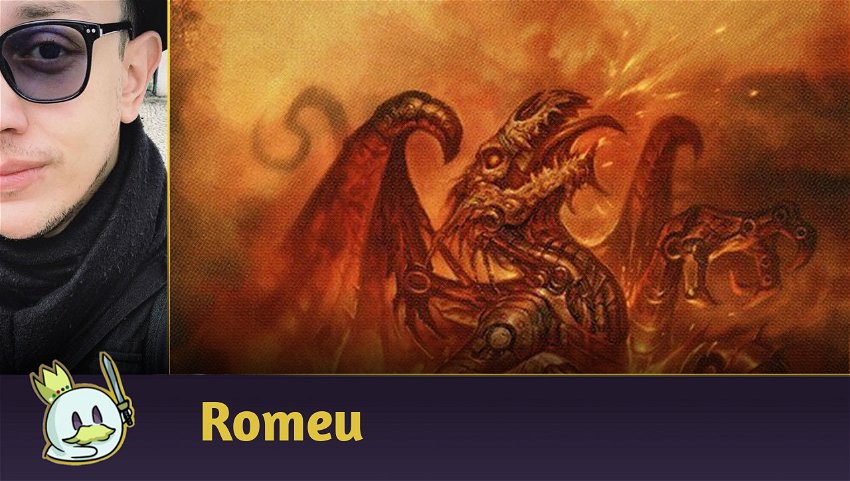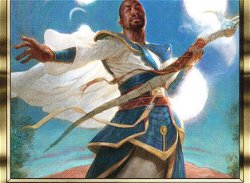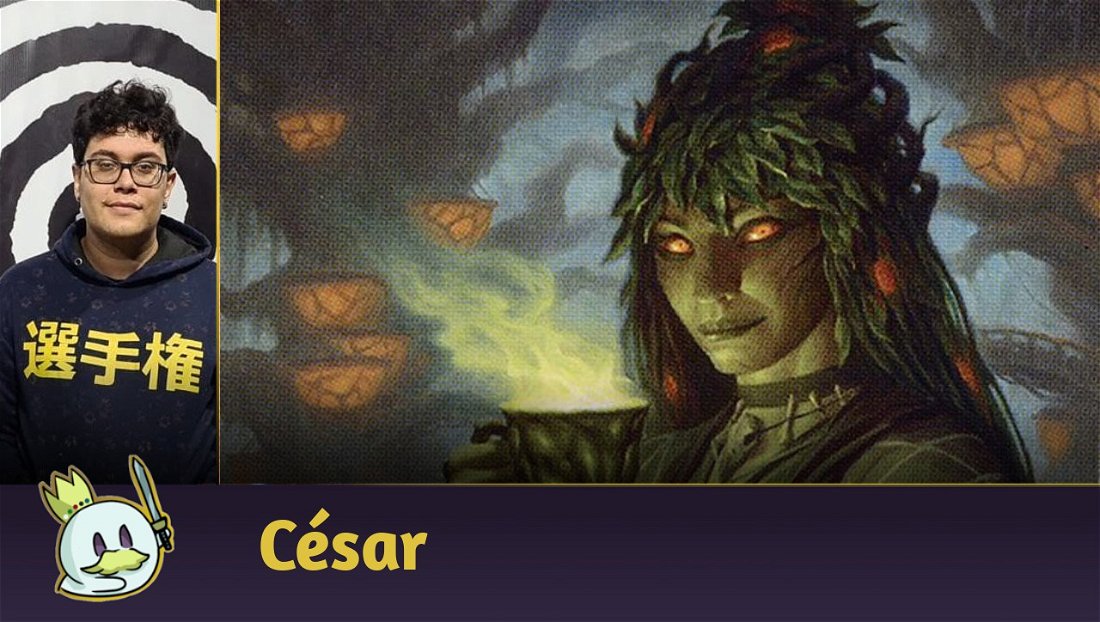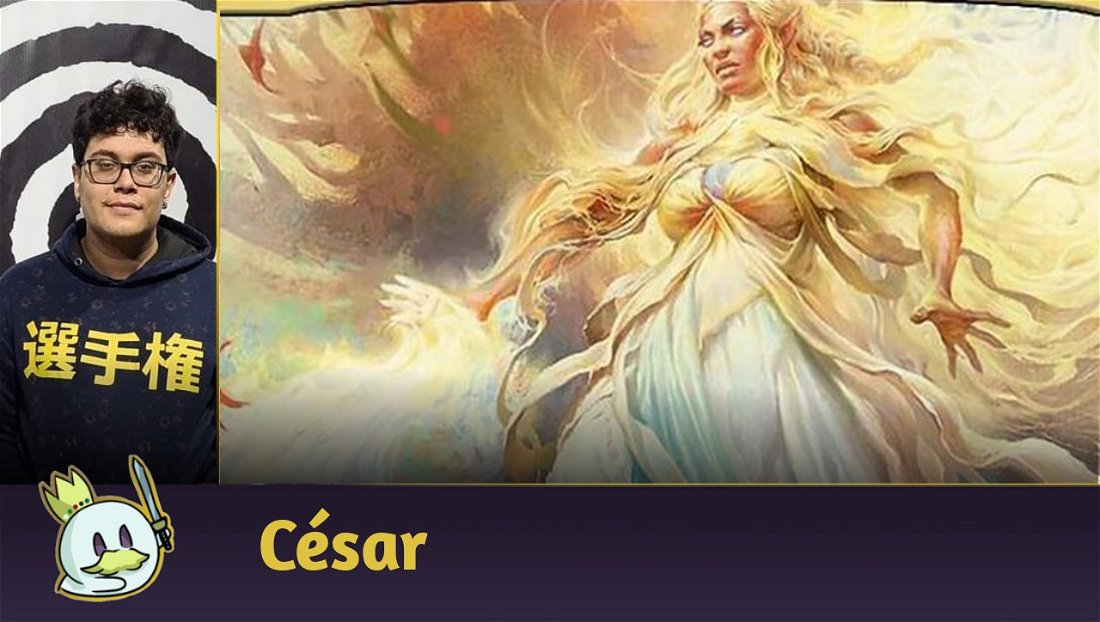Murders at Karlov Manor left its impact on Modern in the most interesting way possible: a new free spell combines with a card released in Modern Horizons II to establish a strategy capable of putting an almost unbeatable threat in play as early as the second turn:

Initially disregarded for its lack of immediate impact, Leyline of the Guildpact gained space in the format due to its combination with Scion of Draco, which adds a keyword soup to all your creatures, becoming very hard to overcome them in combat.
While Domain Zoo was the first archetype to benefit from this new “combo”, another strategy became more prevalent due to its results last weekend, both in Challenges and Regional Championships: Domain Rhinos.
In this article, I dissect Modern's new Cascade variant and present a Sideboard guide based on my experience piloting it in Magic Online Leagues.
What is Domain Rhinos?
Domain Rhinos is the new variant of the famous strategy that runs the combo of cheap spells with Cascade alongside Crashing Footfalls to put ten power on the battlefield as early as the third turn.

This strategy is already well known in Modern and has one of the most consistent results in the format. However, Murders at Karlov Manor allowed the archetype to establish a second game plan with no concessions to the original plan and makes its matchups even more unfair.

Leyline of the Guildpact not only turns Scion of Draco into an unbeatable two-mana threat, it also enables Leyline Binding and other cards with Domain, adding even greater flexibility to the archetype of dealing with troublesome permanents.
Last weekend, Domain Rhinos achieved over 60% aggregate winrate from events, making it the new deck to beat in Modern.
The Decklist
This list is the exact 75 cards ran by Mack Endress in the United States Regional Championship for a result of 12-2. While I believe Sideboard can be refined, it seems like an excellent starting point for the archetype, so we'll use this version as a reference.
Maindeck

The primary game plan and heart of the archetype. Cascade is known as a broken mechanic and has featured in some of the most problematic archetypes in the game's history, especially alongside Valki, God of Lies, where it dominated eternal formats until the errata prevented players from casting Tibalt, Cosmic Impostor.
In this case, we look to use Crashing Footfalls, which is not comparable to Valki, but guarantees an excellent pressure on the board for cheap, and as the tokens created by it have strong enough bodies to survive combat and evasion.

Our alternate and potentially broken game plan. By giving all types to our lands and all colors to our creatures, Leyline of the Guildpact turns Scion of Draco into one of the most powerful threats Modern has ever had.
After all, a flying creature with a wealth of skills that protects itself and other creatures on the battlefield is enough to make any opponent concede. Here, it becomes the complementary threat that Murktide Regent usually is in Temur versions, but since it is cast for just two mana much more easily, there are several games where it becomes our main game plan.
Leyline Binding is Modern's most powerful one-mana answer, and the new enchantment allows it to always be cast for a very low cost. It is another excellent reason to opt for this version, given that its range of valid targets is gigantic and much more efficient when compared to the other options in the Temur variants.

Our interaction package.
Fire // Ice triples its usefulness in this archetype: in addition to functioning as early-game removal, it is an excellent Tempo play against some archetypes that need to sequence their mana, and escapes Cascade's cost restrictions while also powers Force of Negation and Subtlety.
Force of Negation is our default answer against unfair strategies. It's common for it to come out in post-sideboard games where w don't want to suffer with card disadvantage (after all, we already have this problem with Leyline of the Guildpact), but its role in Game 1 is essential to ensure that our opponents don't press the famous “free-win button”.
Subtlety operates on the same logic for decks that run creatures as their centerpieces, like Golgari Yawgmoth or Amulet Titan. However, it becomes even more important in a scenario where the few answers to Scion of Draco involve counterspells or bounces when it is on the stack.

Our manabase involves combining many Fetch Lands alongside several Shock Lands to enable all five land types as early as the second turn. In this case, it is necessary to search for Xander’s Lounge on the first turn and Temple Garden on the second, with any other guaranteeing the third mana necessary to cast a Cascade spell.

Lorien Revealed works as extra copies of Fetch Lands and also as a Pitch for Force of Negation and Subtlety, in addition to becoming an excellent draw effect on the late-game.

The Surveil Lands were a huge surprise in their first week and have become important pieces as one-ofs that we can look for in the first turns to filter the top, improving the chances of finding the card we need.
Sideboard

Before playing the deck, I considered cutting Drannith Magistrate several times because it is below the mana values we seek to use in Cascade lists. However, as I played it in the games where it really matters (Living End, Temur Rhinos, Domain Rhinos), it proved so efficient in “locking” the game against these opponents to the point that I saw no reason not to run it.
Added to the fact that Scion of Draco gives it Hexproof, Drannith Magistrate is the definitive answer against some of the most common matchups in the current Metagame.

Mystical Dispute is our default answer against games where our opponents try to disrupt our game plan with counterspells and/or where we need to deal with greedier mana curves at a reasonable cost.
Dismember is a necessity against archetypes that run troublesome creatures for our strategy, or that need a specific creature to function. Leyline of the Guildpact offers a way for us to pay its mana cost without offering life, if necessary.
Force of Vigor is our default answer against a dozen artifacts and enchantments. It doubles in value now that Domain Rhinos has become the deck to beat, as it deals with both Scion of Draco and Leyline of the Guildpact, as long as both are not in play at the same time.

Boseiju, Who Endures is a complementary answer against artifacts and enchantments, as well as dealing with some lands that can disrupt our game plan.
Tishana’s Tidebinder was the card that propelled Temur Rhinos to the top. Here, it belongs on the Sideboard, as we need space for our alternate game plan, but it remains one of the best answers against many abilities in Modern.
The extra copy of Subtlety is essential for dealing with Scion of Draco on the Mirror, but it also delays creatures like Primeval Titan on inopportune turns.
Sideboard Guide
This Sideboard guide was built based on the five days I played Domain Rhinos in Leagues in my spare time and my previous experience with Temur Rhinos, which has been my main deck in Modern since Lord of the Rings: Tales of Middle-Earth came out.
Rakdos Evoke
IN

OUT

Temur Rhinos
IN

OUT

Domain Rhinos
IN

OUT

Golgari Yawgmoth
IN

OUT

Izzet Murktide
IN

OUT

Amulet Titan
IN

OUT

Living End
IN

OUT

Domain Zoo
IN

OUT

Conclusion
That's all for today!
If you have questions or suggestions, feel free to leave them in the comments!
Thanks for reading!














— commentaires 0
, Réactions 1
Soyez le premier à commenter